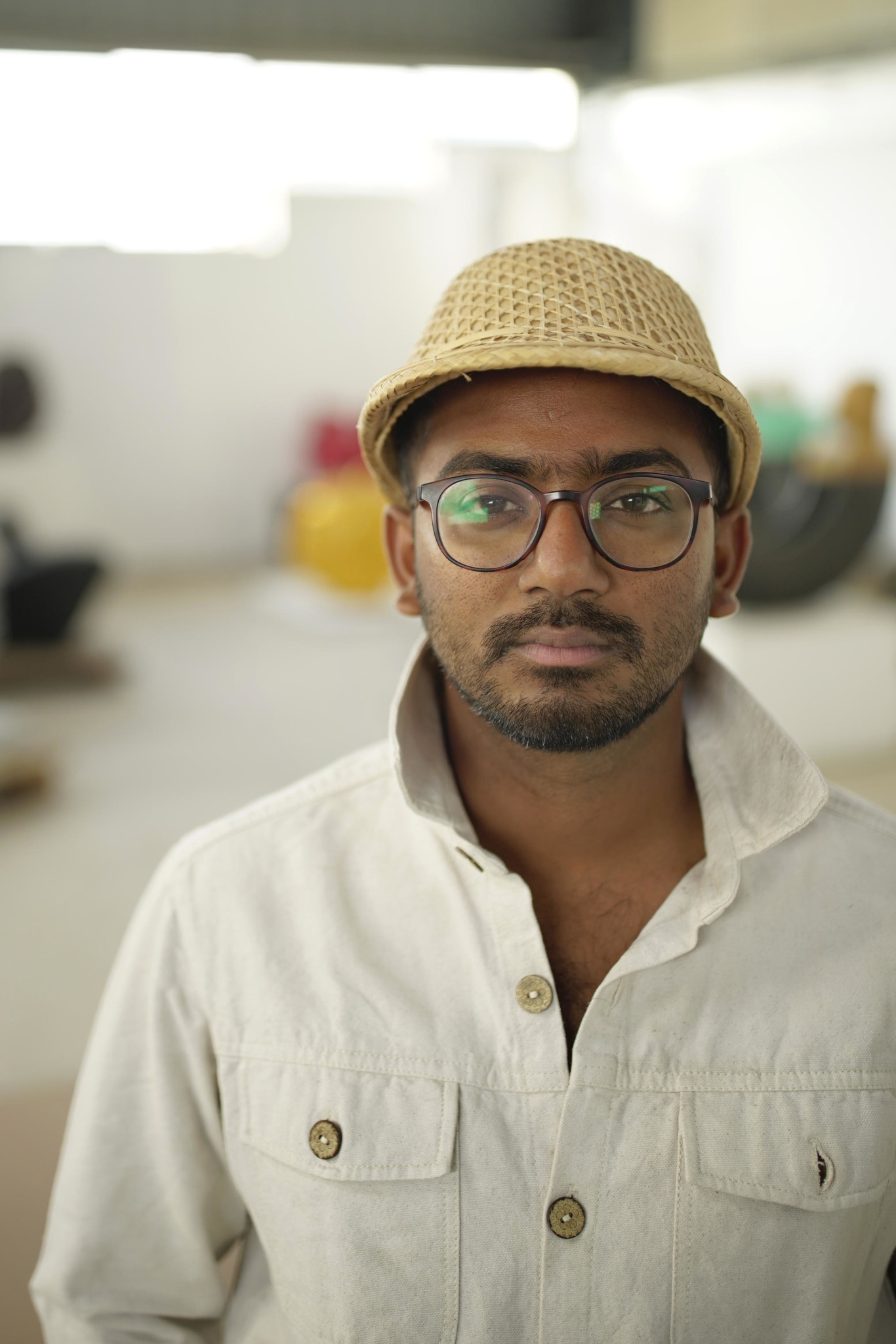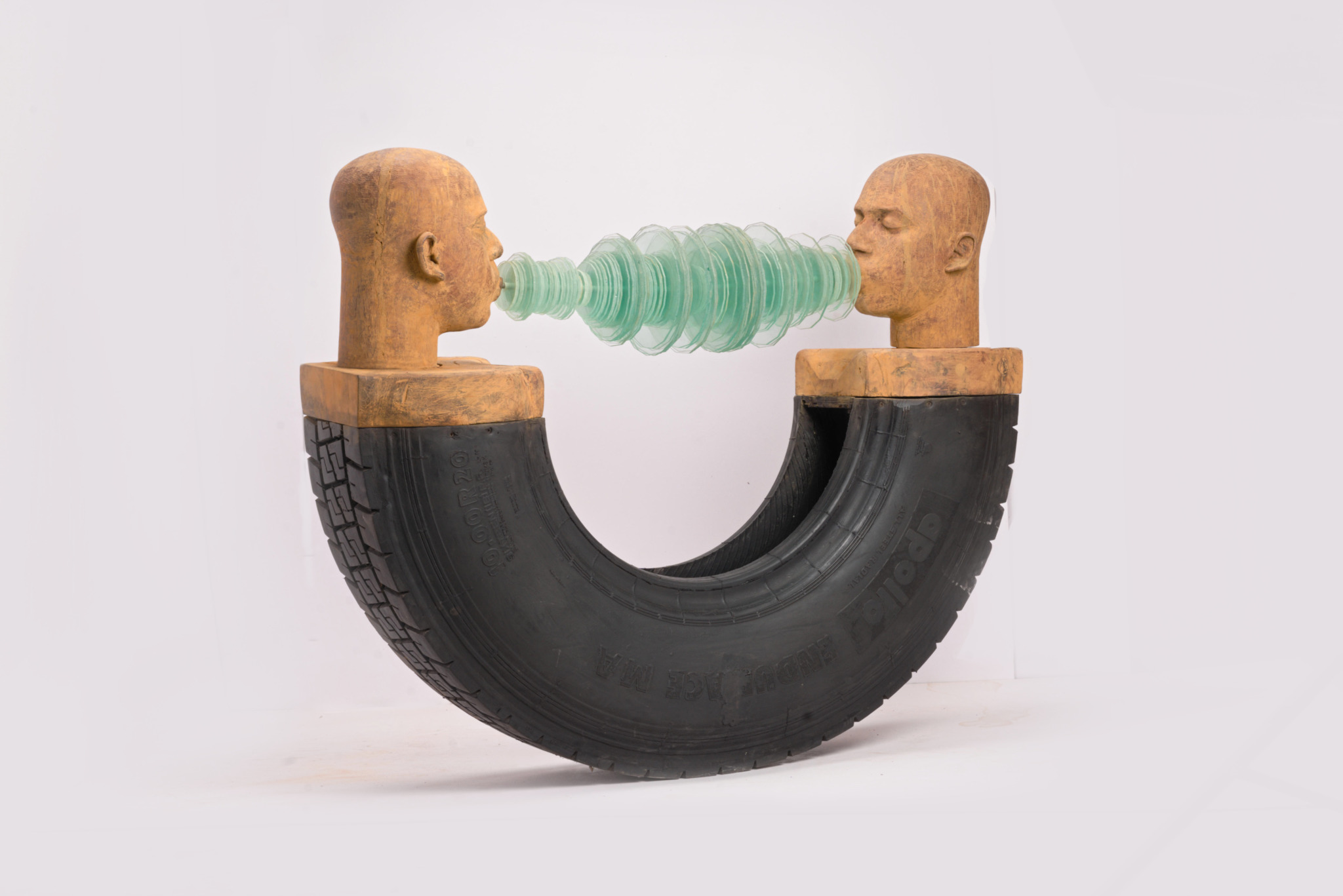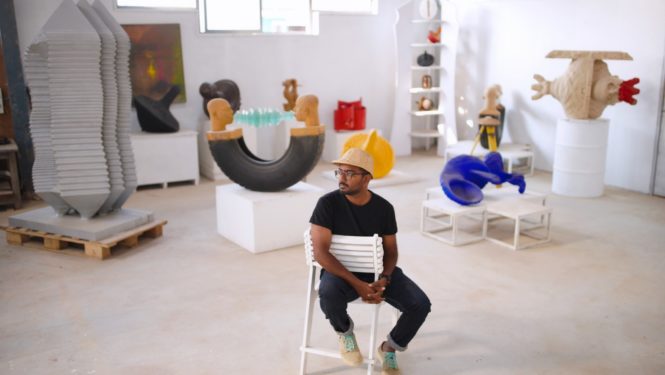Welcome to the ninth in our Boundless Space storytelling series, which introduces just a few of the astonishing artists who have contributed work to the charitable online auction, Boundless Space… The Possibilities of Burning Man. Harsha Durugadda’s piece Conversation is open for bidding until 12:30PM ET on Friday, December 17. Proceeds from the Boundless Space auction are supporting participating artists and Burning Man Project.
In this edition of Boundless Space Artist Stories, we’re honored to introduce you to Harsha Durugadda, an Indian sculptor and performance artist with a unique and thoughtful approach to creative self-expression. Winner of the Rio Tinto Sculptor Award at Sculpture by the Sea in Australia, Durugadda’s work has been exhibited in Germany, England, Australia, and the United States.
Durugadda joined us for a conversation from his studio on a farm outside of Hyderabad in Southern India. After speaking with him, we were even more enthralled by his story, his process, and especially his piece Conversation. We were lucky to meet Durugadda thanks to a connection through Emergent Art Space, and we can’t wait to welcome him Home to Black Rock City.

How did you come to know yourself as an artist?
“My father is a stone sculptor. As a kid I was part of his practice a lot, helping him with the shows at the studio … so playing with tools and playing with materials is natural, it’s second nature. I never felt that I’d be taking this as a career, but I grew up in that kind of environment. The studio was right next to the home, so you don’t know where the studio begins and the home ends.
[While studying design] I got a sense of my identity. I had this baggage of coming from a family of traditional sculptors … I was trying to find a new voice … I did a masters in Art Theory and History and was trying to find where I belong as a man who’s grown up in India with a lot of cultural influence, but also at the same time exposed to international and cosmopolitan literature, music, language, cuisine. So all of this is where I was trying to find an identity for myself.”
Your artist statement says your sculptures “reference human behavior as a form of resistance.” What do you mean by that?
“I grew up in a creative family. My mother studied philosophy as I was growing up … I was influenced by philosophers like Osho, J. Krishamurti, Sigmund Freud, and George Gurdjieff from Russia. So I was looking at philosophy, I was looking at [nomadic cultures], and I think that’s what gave me the intention towards, “what if I make my practice a way to start a discourse?” So when people come and ask me what a sculpture is about, I don’t start talking about the material and the form and the function … I try to give a narrative towards why this has come about.
A work like Conversation is multisensory. Not just multisensory, actually, it’s a mind-shifting experience because what is audio and experienced through the ears is now experienced through a visual form. So then it’s in a transparent medium. This is how I kind of try to shift perspectives from sound to physical objects, or from philosophy to a sculpture.
I don’t just limit [sources of inspiration] to my own culture, to my own religion. I’m really taking from a larger understanding of humanity as such. Sometimes we need to question these things.”

Conversation is two self-portraits facing each other, mounted on a tire. You’ve converted an audio recording of J. Krishnamurti’s A Dialogue with Oneself into a visual form that connects the two faces. Where did the idea for this piece come from?
“I started to unravel this idea: what if I got a sound from the actual location of where the sculpture is going to be exhibited? So rather than sculpture being this monolithic work that always stays the same, and only the context changes … what if it can react to that kind of idea? This takes us back to the idea of how we perceive certain things … So that is where it began. How do I shapeshift and use these multisensory translations? It’s a translation but not a direct translation. It’s like a translation from one sensory experience to a different sensory experience which is called synesthesia. And from there, this work has emerged … but it’s a much more personal piece. You see two self-portraits.”
What about Burning Man is meaningful to you? Why did it make sense for you to collaborate with Burning Man Project on the Boundless Space project?
“Breaking the idea of a white cube gallery is what excited me in the first place. You know, what happens in a white cube gallery is limited. When you break out of the white cube gallery, you experience the immediacy of being in nature’s lap. You can see the sunset with the sculpture. You can see the sun, the midday, and the morning, and that changes so much. The images of the same sculpture during the night and during the morning … it’s just so much more.
And also the democratization … anybody can walk in. We are in the 21st century. We cannot have gatekeepers. I think these [Burning Man events] are the open spaces, open platforms, that allow that kind of neutral space where everybody can really enjoy art. That’s what I’ve been doing. I’ve been globetrotting and maybe Burning Man is next … let’s see.”
Cover image: Harsha Durugadda in his studio (Photo courtesy of the artist)

